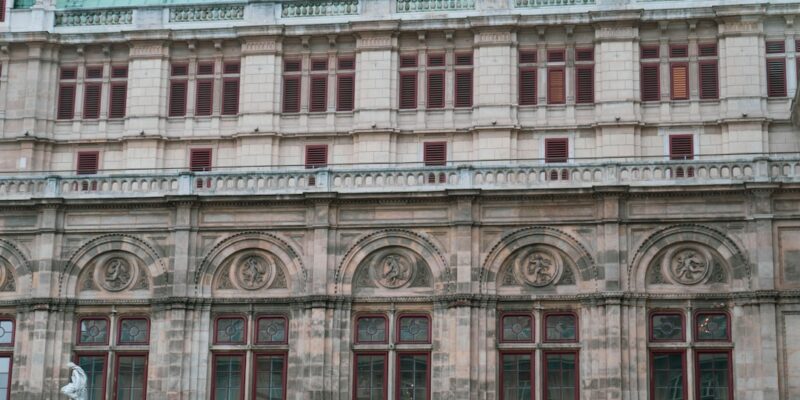
Exploring Barcelona’s Gothic Quarter: Art and Architecture.
The Gothic Quarter, also known as Barri Gòtic, is one of the most iconic and historic neighborhoods in Barcelona, Spain. Located in the heart of the city, this neighborhood is a labyrinth of narrow streets, medieval buildings, and Gothic architecture. It is a place where history comes alive, and where visitors can immerse themselves in the rich cultural heritage of Barcelona.
Key Takeaways
- The Gothic Quarter is a historic neighborhood in Barcelona with a rich artistic and architectural heritage.
- Gothic architecture is a prominent feature of the neighborhood, with stunning examples like the Cathedral of Barcelona and the Church of Santa Maria del Pi.
- The Gothic Quarter is home to many iconic buildings and monuments, including the Plaça del Rei and the Palau de la Generalitat.
- Exploring the neighborhood’s hidden gems is a must-do, with charming streets and squares like Carrer del Bisbe and Plaça Sant Felip Neri.
- The Gothic Quarter’s artistic influence can be seen throughout Barcelona’s culture, from street art to contemporary art scenes.
The Gothic Quarter: A Brief History
The history of the Gothic Quarter dates back to Roman times when it was known as Barcino. Over the centuries, the neighborhood has seen various influences and events that have shaped its development. From the Visigoths to the Moors to the Catalans, each group has left its mark on the neighborhood.
One of the key events that shaped the Gothic Quarter was the construction of the Barcelona Cathedral in the 13th century. This magnificent cathedral became a symbol of the city and a focal point for religious and cultural activities. Another important event was the construction of the city walls in the 14th century, which helped protect Barcelona from invasions and attacks.
Gothic Architecture: A Visual Tour
Gothic architecture is characterized by its pointed arches, ribbed vaults, and flying buttresses. It originated in France in the 12th century and spread throughout Europe during the Middle Ages. The Gothic Quarter is home to some of the finest examples of this architectural style.
One of the most famous examples of Gothic architecture in the neighborhood is the Barcelona Cathedral. Its stunning facade features intricate stone carvings and sculptures that depict biblical scenes and saints. Inside, visitors can admire its soaring nave and beautiful stained glass windows.
The Artistic Heritage of Barcelona’s Gothic Quarter
| Category | Metric |
|---|---|
| Number of buildings | Over 200 |
| Age of buildings | From 13th to 15th century |
| Architectural style | Gothic |
| UNESCO World Heritage Site | Yes |
| Landmarks | Santa Maria del Mar, Plaça del Rei, Palau de la Generalitat |
| Tourist attractions | Barcelona Cathedral, Picasso Museum, Gothic Quarter Walking Tour |
The Gothic Quarter has a rich artistic heritage that spans centuries. From medieval sculptures to modern street art, this neighborhood has been a hub for artistic expression.
During the Middle Ages, Barcelona was a center of artistic production, and many of the city’s finest Gothic sculptures and paintings can be found in the Gothic Quarter. One of the most famous examples is the Virgin of the Consellers, a 15th-century sculpture that is housed in the Barcelona City History Museum.
The Gothic Quarter’s Most Iconic Buildings and Monuments
The Gothic Quarter is home to some of Barcelona’s most iconic buildings and monuments. These landmarks not only showcase the neighborhood’s architectural beauty but also hold historical and cultural significance.
One of the most iconic buildings in the neighborhood is the Palau de la Generalitat, which serves as the seat of the Catalan government. This stunning palace dates back to the 15th century and features a mix of Gothic and Renaissance architectural styles.
Exploring the Neighborhood’s Hidden Gems
While the Gothic Quarter is known for its iconic landmarks, there are also many hidden gems waiting to be discovered. These lesser-known attractions offer a unique glimpse into the neighborhood’s history and culture.
One hidden gem in the Gothic Quarter is the Plaça Sant Felip Neri, a small square tucked away from the main tourist routes. This peaceful square is home to a beautiful church and a school that was bombed during the Spanish Civil War.
The Gothic Quarter’s Artistic Influence on Barcelona’s Culture
The Gothic Quarter has had a profound influence on Barcelona’s culture, particularly in the realm of art. Many artists have been inspired by the neighborhood’s rich history and architectural beauty.
One example of this influence is Antoni Gaudí, one of Barcelona’s most famous architects. Gaudí drew inspiration from Gothic architecture and incorporated elements of it into his own designs, such as the Sagrada Família.
The Role of Religion in the Gothic Quarter’s Architecture
Religion has played a significant role in shaping the architecture of the Gothic Quarter. Many of the neighborhood’s buildings were constructed as places of worship, and their design reflects the religious beliefs of the time.
One of the most important religious buildings in the neighborhood is the Barcelona Cathedral. This magnificent cathedral was built to honor Saint Eulalia, the patron saint of Barcelona. Its design incorporates elements of Gothic architecture, such as pointed arches and ribbed vaults.
The Gothic Quarter’s Artistic and Architectural Evolution Over Time
Over the centuries, the art and architecture of the Gothic Quarter have evolved to reflect changing tastes and styles. From medieval sculptures to modern street art, this neighborhood has seen it all.
During the Renaissance, the Gothic Quarter saw a shift towards a more classical style of architecture. Many buildings were renovated or rebuilt in this style, which featured elements such as columns and pediments.
The Gothic Quarter’s Street Art and Urban Culture
In recent years, the Gothic Quarter has become a hub for street art and urban culture. The narrow streets and historic buildings provide a unique canvas for artists to express themselves.
One notable example of street art in the neighborhood is the work of the artist El Pez. His colorful fish murals can be found throughout the Gothic Quarter, adding a playful touch to the historic streets.
The Gothic Quarter’s Impact on Barcelona’s Contemporary Art Scene
The Gothic Quarter has had a significant impact on Barcelona’s contemporary art scene. Many artists and galleries have chosen to make this neighborhood their home, attracted by its rich history and vibrant atmosphere.
One example of a contemporary artist who has been influenced by the Gothic Quarter is Jaume Plensa. His sculptures can be found in public spaces throughout Barcelona, including in the Gothic Quarter.
The Gothic Quarter is a neighborhood that is steeped in history, culture, and art. From its medieval architecture to its vibrant street art scene, this neighborhood offers something for everyone. Whether you are interested in history, architecture, or contemporary art, a visit to the Gothic Quarter is a must when in Barcelona. So, take the time to explore its narrow streets, discover its hidden gems, and immerse yourself in the rich cultural heritage of this iconic neighborhood.
FAQs
What is the Gothic Quarter in Barcelona?
The Gothic Quarter is a neighborhood in the center of Barcelona, Spain. It is known for its medieval architecture and narrow streets.
What is the history of the Gothic Quarter?
The Gothic Quarter dates back to the Roman era, but it was during the Middle Ages that it became the center of the city. Many of the buildings in the neighborhood were built during this time.
What are some of the notable buildings in the Gothic Quarter?
Some of the notable buildings in the Gothic Quarter include the Barcelona Cathedral, the Church of Santa Maria del Pi, and the Palace of Catalan Music.
What is the architecture like in the Gothic Quarter?
The architecture in the Gothic Quarter is predominantly Gothic, with many buildings featuring pointed arches, ribbed vaults, and ornate decoration.
What is the art like in the Gothic Quarter?
The art in the Gothic Quarter is diverse, with many museums and galleries showcasing both traditional and contemporary works. Some notable art institutions in the neighborhood include the Picasso Museum and the Barcelona Museum of Contemporary Art.
What is the best way to explore the Gothic Quarter?
The best way to explore the Gothic Quarter is on foot, as many of the streets are narrow and pedestrian-only. Visitors can also take guided tours to learn more about the history and architecture of the neighborhood.


















